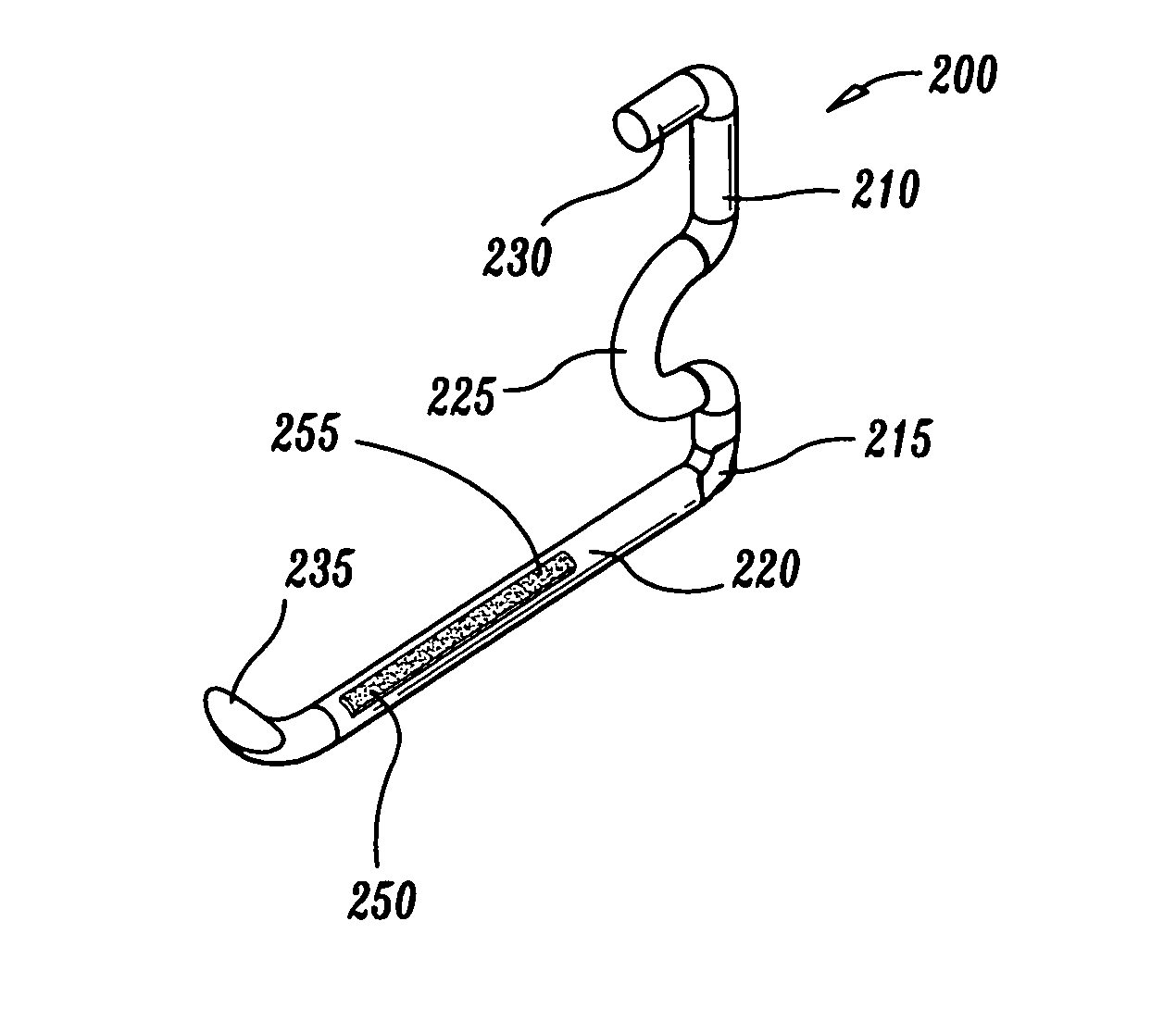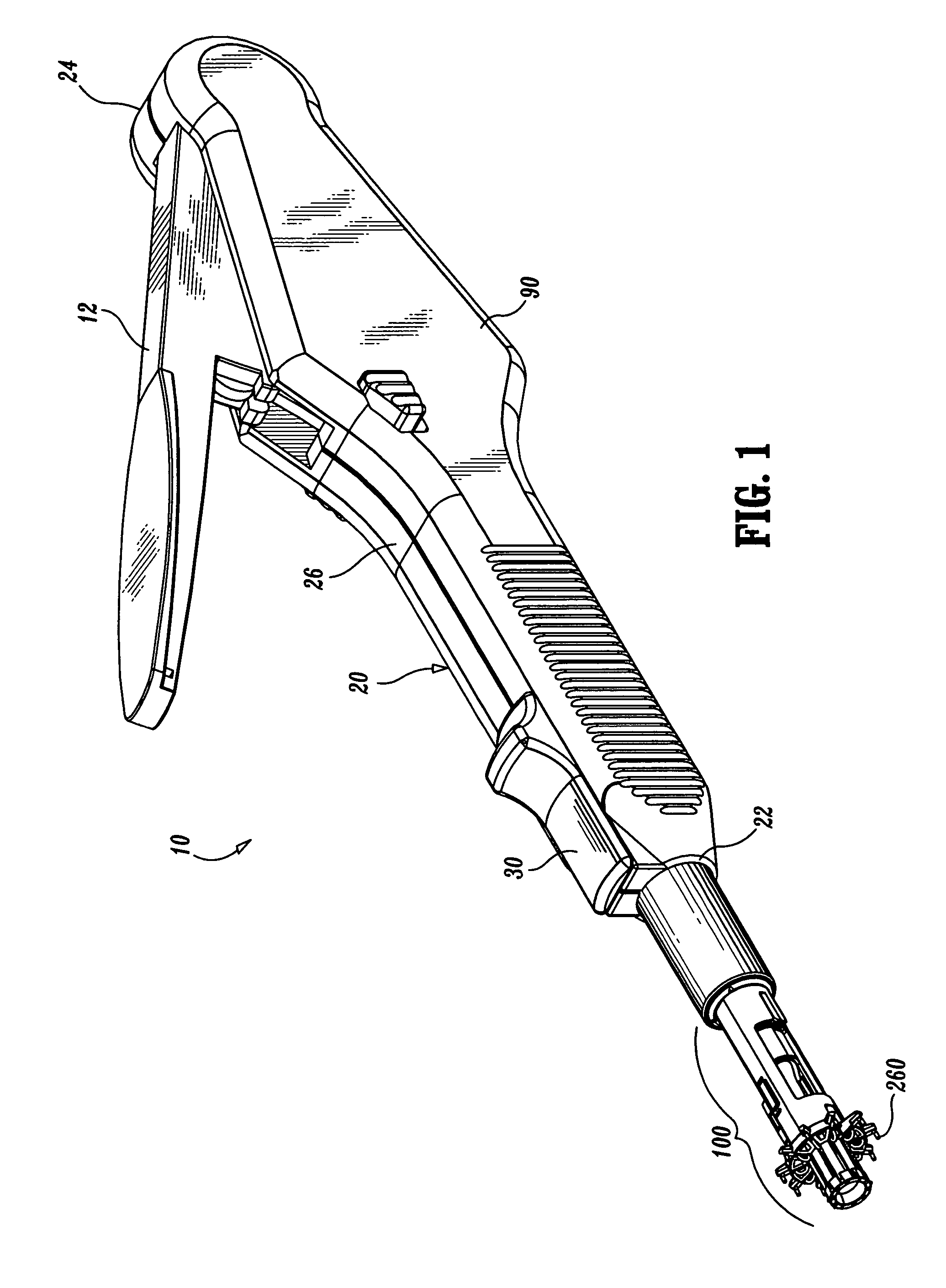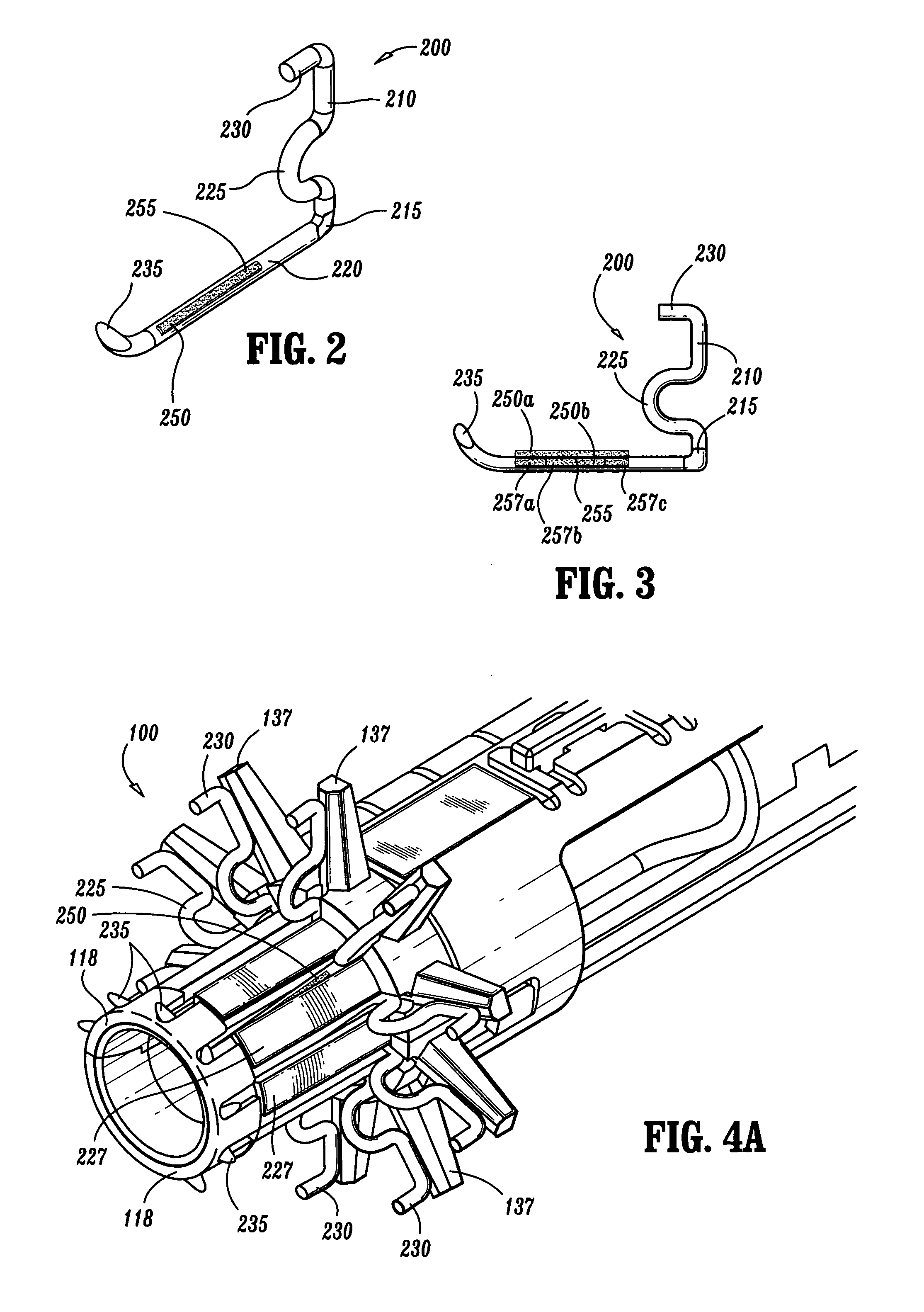Anastomotic staple with capillary which expels a bonding agent upon deformation
a capillary and anastomosis technology, applied in the field of surgical staples, can solve the problems of affecting the surgeon's ability to manually apply sutures to grafts, increasing the risk of trauma to the interior walls of the vessels, and impede the surgeon's ability to perform manual suture application, etc., to achieve accurate and efficient delivery, promote healing, and promote anastomosis.
- Summary
- Abstract
- Description
- Claims
- Application Information
AI Technical Summary
Benefits of technology
Problems solved by technology
Method used
Image
Examples
Embodiment Construction
[0037]Preferred embodiments of the surgical fastener disclosed herein will be described in terms of a surgical instrument used for coronary artery bypass procedures wherein a vascular anastomosis is created by joining a section of a harvested vessel, e.g., the saphenous vein, to bypass an occlusion in a coronary artery, e.g., the left anterior descending artery (“LAD”). Alternatively, the presently disclosed surgical instrument may also be utilized in performing anastomosis of other tubular luminal body structures, e.g., colon resection.
[0038]In the drawings and in the description which follows, the term “proximal”, as is traditional, will refer to the end of the apparatus which is closer to the user, while the term “distal” will refer to the end which is further from the user.
[0039]Referring now in detail to the drawing figures in which like reference numerals identify similar or identical elements, one embodiment of an instrument for use with a surgical fastener 200 according the ...
PUM
 Login to View More
Login to View More Abstract
Description
Claims
Application Information
 Login to View More
Login to View More - R&D
- Intellectual Property
- Life Sciences
- Materials
- Tech Scout
- Unparalleled Data Quality
- Higher Quality Content
- 60% Fewer Hallucinations
Browse by: Latest US Patents, China's latest patents, Technical Efficacy Thesaurus, Application Domain, Technology Topic, Popular Technical Reports.
© 2025 PatSnap. All rights reserved.Legal|Privacy policy|Modern Slavery Act Transparency Statement|Sitemap|About US| Contact US: help@patsnap.com



